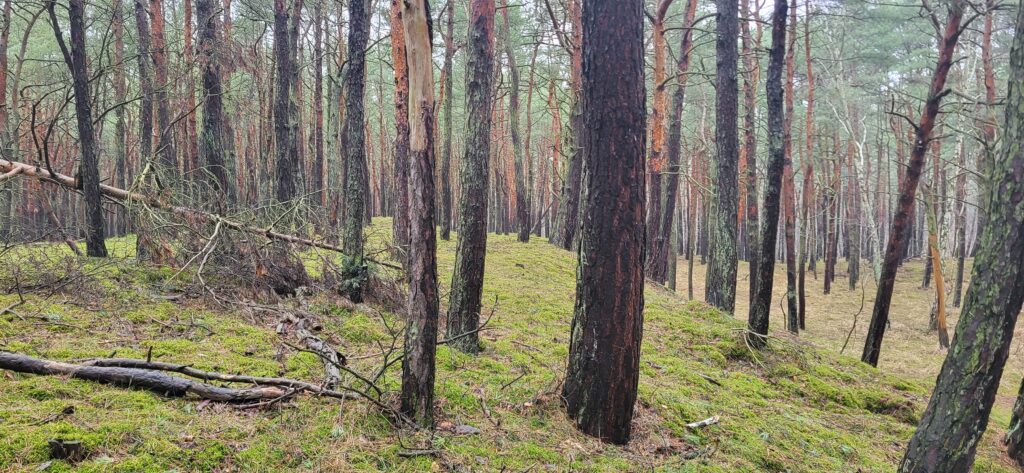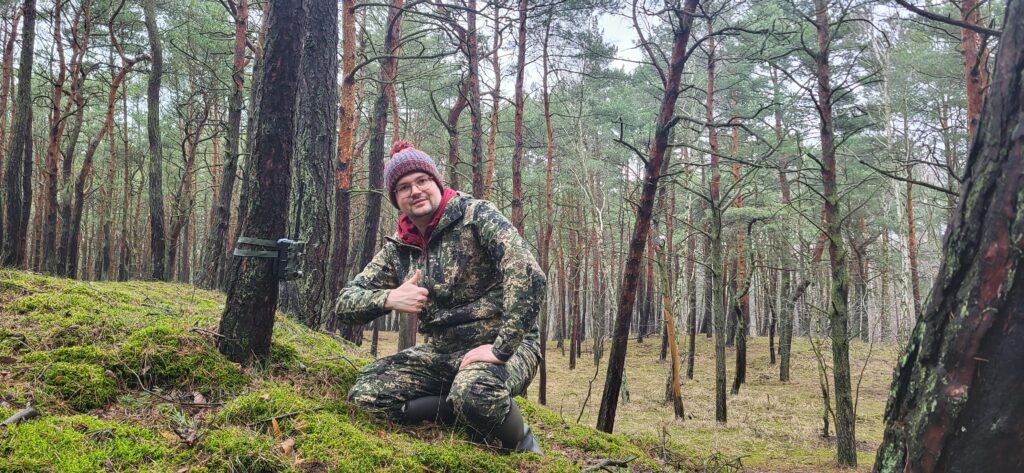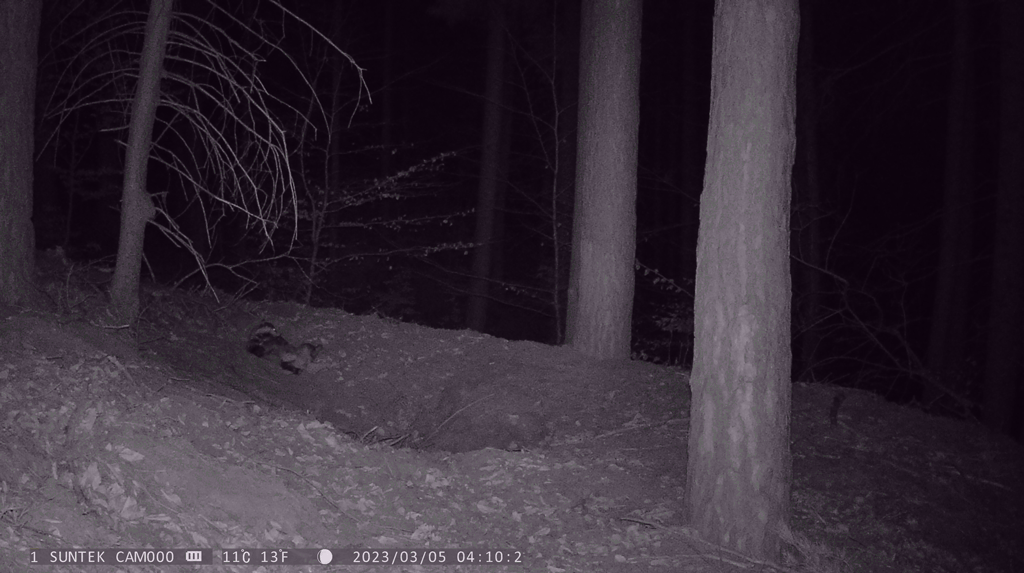Tools of trade: camera traps or trail cameras
We came across the idea of using a camera trap when we met a badger in our forest for the first time. We have managed to sneak upon him and find his sett. Our observations of badgers started from a distance. However, after reading a few articles and checking out YouTube videos, we have opted to acquire a trail camera, or so-called camera trap.

By no means do we feel like experts in using trail cameras. However, we hope that this post will help if you are debating whether to buy one or not.
Of course, our first concern was camera safety. We have invested in the cheapest one, just to try them out. We wanted to check whether the footage and pictures were of any use to us and if the camera would be spotted and eventually stolen. Regarding the first concern, the doubts were quickly dispelled. Even though pictures and videos were terrible, animals could be recognized and clock worked as well. At thsi point it was sufficient. Considering the second doubt, after two years of using camera traps, none of our six cameras were stolen. Actually, they were rarely spotted by bypasses. Another tick in a box!
Our cameras
Our first camera was the very cheapest Suntek, a predecessor to the current (as of February 2024) HT001B model. After initial successes, we purchased two more units for about 18 USD each. All of them are dead now. At the beginning, they seemed to work quite well, but over time, movement (PIR) sensor started to fail, and we’re confident many shots were missed. Nevertheless, those cameras were very useful for us at the beginning.
Currently, we have three trail cameras. The first one is the Suntek 801Pro LTE 4G. A camera we thought would be incredible. Well, it turned out quite the opposite. Mainly due to a lack of consistency in movement/PIR sensor triggers. We had really high hopes for online and live transfers of videos and pictures. But after some time, we bought two more cameras—this time a much cheaper Sunteks HC-804A. Those turned out to be quite reliable, or even too sensitive. Those windy days can fill your SD cards way too fast! At the moment, we are using them at medium sensitivity, or sometimes even at the lowest setting. Due to our confidence in their PIR and moderate price (~40 USD), these cameras have spent the most time in the field. After 1.5 years, they still serve us well.
We have used cameras in a few places: around setts, fox dens, wallows (mud-filled holes), water sources and close to identified wildlife tracks or highways.
What do you gain from using a phototrap?
- You’re investing in your personal „window” into local widlife, and as such you become an invisbile spectator without disturbing natural rythyms. It’s such a thrill to unvail those secrets!
- You can monitor the situation short and long term, which means you understand not only current animals behaviour but seasonal patterns too
- You can easily verify your assumptions and decide if the place you’ve selected has any potential for widllife photography to begin with.. and you can do so from the comfort of your couch! Every time we check what was recorded, we find something unusual or surprising. For instance we have found animals we did not expect to be inhabiting our woodland.. like invasive racoons.
Currently, we have three trail cameras. The first one is the Suntek 801Pro LTE 4G. A camera we thought would be incredible. Well, it turned out quite the opposite. Mainly due to a lack of consistency in movement/PIR sensor triggers. We had really high hopes for online and live transfers of videos and pictures. But after some time, we bought two more cameras—this time a much cheaper Sunteks HC-804A. Those turned out to be quite reliable, or even too sensitive. Those windy days can fill your SD cards way too fast! At the moment, we are using them at medium sensitivity, or sometimes even at the lowest setting. Due to our confidence in their PIR and moderate price (~40 USD), these cameras have spent the most time in the field. After 1.5 years, they still serve us well.
We have used cameras in a few places: around setts, fox dens, wallows (mud-filled holes), water sources and close to identified wildlife tracks or highways.
What do you gain from using a phototrap?
- You’re investing in your personal „window” into local widlife, and as such you become an invisbile spectator without disturbing natural rythyms. It’s such a thrill to unvail those secrets!
- You can monitor the situation short and long term, which means you understand not only current animals behaviour but seasonal patterns too
- You can easily verify your assumptions and decide if the place you’ve selected has any potential for widllife photography to begin with.. and you can do so from the comfort of your couch! Every time we check what was recorded, we find something unusual or surprising. For instance we have found animals we did not expect to be inhabiting our woodland.. like invasive racoons.
Our strategy for setting the camera traps is quite simple. Usually, we try to put one at a place to verify if there is any activity in the given spot. If it turns out to be the case, then we consider the location for photography, and usually mount a second one to have a better overview of the area and what would be the most convinient setting. Most of the time, they stay on location for a week or so. With all the data needed, we make a final call. And if so, we already know what time it is best to come. However, we have also faced failure. We thought we had enough knowledge and preparation, but nature had its own plans.

Lately, we have switched from conventional zinc AA batteries to rechargeable NiMH batteries. We source ours from IKEA. Also, we have bought additional memory cards and an extra spare set of batteries. This way, we travel only once to the camera to change the card and one battery set. No return trip is needed to reinstall the camera. Before that, we sometimes used to take a laptop and card reader with us, download all the pictures on site, format and reinstall the card.
Regarding true camera trapping, We have not tried it yet. It seems like a great idea, but equipment is quite expensive, and you must have true faith that no one will steal your gear. A proper set-up might also involve a lot of additional equipment, such as speedlights. Who knows, maybe one day we will have a go at this genre of photography!
Regarding true camera trapping, We have not tried it yet. It seems like a great idea, but equipment is quite expensive, and you must have true faith that no one will steal your gear. A proper set-up might also involve a lot of additional equipment, such as speedlights. Who knows, maybe one day we will have a go at this genre of photography!
All in all, if you want to start verifying your local wildlife activity:
- Look for reliability first
- Video and picture quality are terrible, no matter how well the manufacturer advertised the sensor
- Consider rechargeable batteries
- Get more cards (2n) and batteries than you have traps (n+1)
- The US market has a solid choice of quite cheap cameras. In Europe, western-made cameras are expensive. China turned out to be the best shopping market for trail cameras. In most stores in Poland, all they do is resell the Chinese ones.

We hope that if you were hesitating to buy your first trail camera, your doubts are not gone. If you have any questions, feel free to mail us or hit us on Instagram!
Wanda and Michał